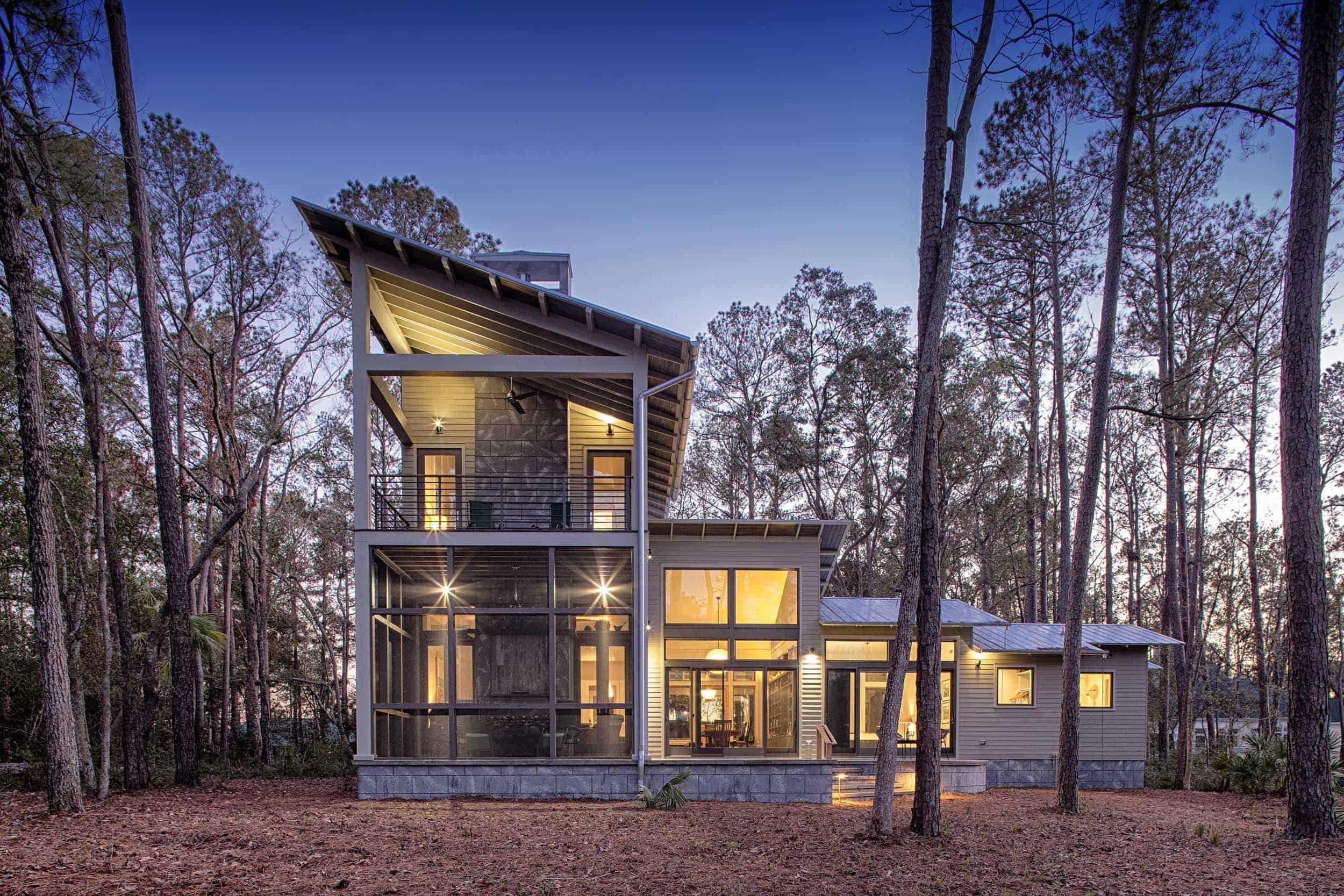How Can My Home Be More Sustainable?
How can my home be more sustainable? Southern vernacular building techniques are based on sustainable principles which we continue to use today.
Lessons from Southern Vernacular Architecture
Prior to the advent of air conditioning, an understanding of local environments enabled southerners to build in ways that buffered the harsh climatic realities. As Europeans moved to the southern colonies it typically took them a generation to adapt their native architecture to the climatic conditions of the region. Five lessons they learned are equally important today.
Houses one room thick maximized cross ventilation. The thin plans also provided ample light that prohibited mold growth in dark areas.
The best orientation of this thin plan was east to west to reduce solar gain. The windows were located to catch the prevailing summer breezes.
Large porches or verandas were always located on the southern side and often on the east and west, too. The verandas protected the house from both the sun and the rain, provided circulation, and created a cool place to sit and sleep in the summertime.
High ceilings allowed the heat to rise and provided a more comfortable environment.
By raising the houses off the ground several things were accomplished; it allowed the first floor to be out of the flood plain in coastal areas; breezes are better on the raised first floor; and air circulating under the house helped reduce the heat gain.
Next Steps
Additional components for a sustainable house include the following:
Use sunscreens and large overhangs to block the summer sun
Detail and build a airtight house
Keep all HVAC ducts and equipment in conditioned or semi-conditioned space
Use high efficiency heating and cooling equipment
Use durable, safe, local materials with post consumer recycled content
Use excellent insulation
Use LED lighting
Certificate Programs
There are several certification programs active in the Lowcountry. They all have third party verification requirements and different programs for different building types. Some require performance -based measurements while others have a prescriptive path to the desired performance level. The non-residential programs are led by the design team of architects and engineers and the residential programs are under the purview of the contractor.
There are five general areas that all the programs measure; Sustainable Sites, Water Efficiency, Energy Use, Materials and Resources, and Indoor Environmental Quality. There are mandatory requirements and a minimum number of earned points in each category. Each program awards different levels of certification based on the number of points earned. For example the LEED programs are LEED Certified, LEED Silver, LEED Gold, and the highest rated LEED Platinum. The areas overlap and green strategies can often result in points in several categories. The decision to have daylight in all interior spaces can gain points in Energy Use (less need for electric lights) and Indoor Environmental Quality (occupants’ well being is better with daylight and a view).
Sustainable Sites
Sustainable site requirements are focused on minimizing the building impact which includes: locating the project in a developed area, preferably on a pre-developed site within walking distance of essential services; using regionally appropriate landscaping; controlling stormwater runoff both during and after construction; and reducing erosion, light pollution, and construction related pollution. Beaufort County averages almost 50 inches of rainfall a year. This creates an opportunity to retain the water in a cistern for use in landscape irrigation or for non-potable domestic water use.
Water Efficiency
Water Efficiency rewards water conservation both inside and outside. The interior strategies include high efficient appliances, fixtures and fittings. Water-wise landscaping and water harvesting in rain barrels or cisterns for reuse are exterior conservation options.
Energy Efficiency
The single most important category is Energy & Atmosphere, where the overall goal is to reduce energy consumption and encourage the generation of renewal energy. Strategies include: energy use monitoring; efficient design and construction; efficient appliances, HVAC systems and lighting; use of renewable and clean sources of energy generated on-site or off-site; and natural daylight in spaces by windows or skylights. Many homeowners want to go to the next level by creating their own energy with solar panels or wind generators and heating their own hot water with solar hot water heaters. A solar electric system qualifies for both federal and state tax credits and net metering from the power company.
Material
Materials & Resources promote the selection of sustainably grown, harvested, produced and transported products and materials. This category also is concerned with the reduction of waste both from the construction site and the manufacturer’s site as well as reuse and recycling. Attention is given to the travel distance of materials and resources to the construction site and to the manufacturer’s plant. Reuse of an existing building, recycled materials, and locally produced materials are the high point favorites.
Indoor Air Quality
Indoor Environmental Quality strives to improve indoor air quality; access to natural daylight and views; and improving acoustics. The category focuses on reducing indoor pollutants such as VOC’s (Volatile Organic Compounds) in paint and off gassing of irritants found in adhesives, carpets, composite wood products and furniture. Strategies include managing moisture to prevent mold, increasing ventilation rates and mechanical controls to maintain the proper levels of temperature and humidity.
According to the United States Green Building Council, buildings account for approximately 39% of total annual US energy consumption (31% for building operations, 8% for building construction). Building operations (heating, cooling, ventilation, hot water, etc.) account for 38% of total annual US greenhouse gas emissions. And 72% of all the electricity produced at power plants in the US goes to operate buildings. So it is time for us all to learn more about green building and consider getting your project certified. You might even qualify for a tax credit.


